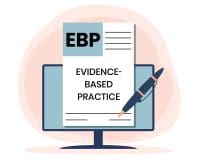A glimpse into what matters
I wanted to give you an update on Mark, the young man in my article, “The freeing force of laughter” in the August issue. His mother called to tell me he died at the end of January. Before he died, he drove his car to visit friends in California, and he did a fair bit of living.
He was so proud to have his story in print, and so was his mother. Sometimes we get glimpses into how our actions matter to others, in ways we would have never imagined.
Mary DeLisle-Berry, RN
Ypsilanti, MI
A question of visibility?
I found ANA’s letter of concern about the proposed Office of National Nurse (ONN) interesting, but I wonder why ANA took so long to register an opinion (“Headlines from the Hill” in the December issue). The ONN proposal has been on the front burner for some time.
Like most nurses I know, I am a strong supporter of public health programs and public health nurses. I work to stay fairly well informed, even in retirement. Yet, I cannot tell you who holds the position of Chief Nurse Officer (CNO) of the U.S. Public Health Service. And no where in the article was this person identified by name. Is it possible that the low visibility of the CNO fed into the need to create an ONN to heighten awareness of the versatility of professional nursing and its ongoing service to the public?
Patricia van Betten, RN
Blue Diamond, NV
Response from ANA:
The ANA has long held concerns about the proposed creation of an ONN. ANA initially shared these concerns in a New York Times Op-Ed just 5 days after the proposal arose.
Clearly, ONN supporters are well intentioned, and ANA supports strengthening the CNO’s role. However, we do not believe that a title change or added visibility for the CNO would be a panacea for the nursing shortage or our current health care crisis.
More complicated, real answers to these challenges lie in the advancement of legislation, empowerment of nurses to run for office and seek agency appointments, and involvement of all nurses in the legislative and political processes. No individual, regardless of title, could be as powerful a voice for the profession and patients as the millions of RNs who comprise the country’s largest group of health care professionals.
Michelle Artz, MA
Associate Director of ANA’s Department of
Government Affairs
Barriers for nurses with disabilities
As a working APRN with multiple sclerosis, I found “Ready, willing and disabled” in your August issue to be an accurate description of the barriers nurses with disabilities face. In my 13 years of working disabled, I’ve found that when my peers support me but the administrators don’t, the result is a hardship for every nurse involved because of interpersonal conflicts caused by a fractured approach. On the other hand, I’ve had the good fortune to work at a facility where all nurses (disabled or not) were treated extremely well and where I felt recognized for my expertise and received the same opportunity as other nurses. Thank you for tackling this issue.
Julie A. Follett, MSN, CNS, APRN
New Britain, CT
Pertinent and praiseworthy
What a great magazine you have! I have been a nurse for 25 years and have read all the nursing magazines. Yours is by far the best.
I’m a manager on a telemetry floor and encourage my staff to read your articles; so many of them are pertinent to our floor.
Nikki McConkey, RN
Westmoreland, NY O
We welcome your comments. You may submit letters to the editor electronically at www.AmericanNurseToday.com/letters. Or you may send them by regular mail to: Letters to the Editor, American Nurse Today, c/o HeatlhCom Media, 259 Veterans Lane, 3rd Floor, Doylestown, PA 18901. Please include your full name, credentials, city, state, and daytime phone number or e-mail address. Letters should contain no more than 250 words and will be edited for grammar, length, content, and clarity. All letters are considered American Nurse Today property and therefore unconditionally assigned to American Nurse Today.

















